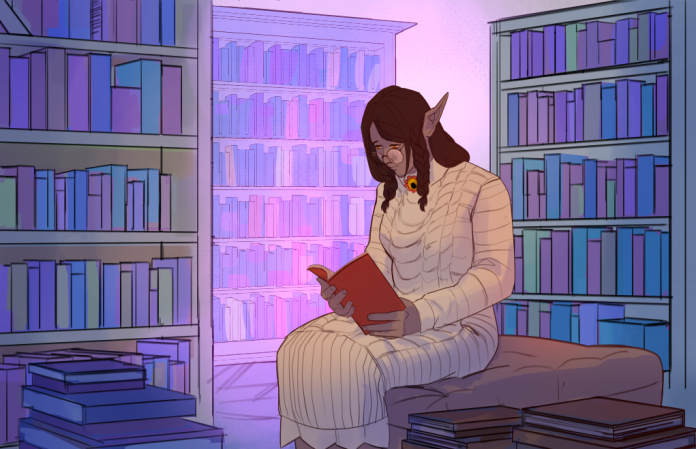Fall is a great time to get cozy with a book and scare the hell out of yourself with, but frankly, it’s sometimes difficult to come across good, gripping horror. It isn’t for lack of trying; there are many, many horror books out there, but sometimes it can be very difficult to get into the right headspace to be terrified or shocked in the way a cheap scare from a film or video game can illicit. Instead, perhaps, horror fiction tends to focus on feelings of dread and despair, making you regret the idea of even turning the next page and seeing what was coming next. For the season, I had both Lenoon and Liam join me for this edition, since horror can be quite the subjective genre as well.
So, without further ado, let’s get into the books and see if we can’t stir up some thrills and chills for your Fall and Winter reading pleasures!
The Midwich Cuckoos – John Wyndham
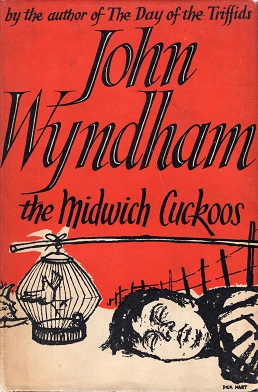
Lenoon: When the inhabitants of Midwich fall unconscious for 24 hours, they wake up to find a spate of mysterious pregnancies that will end in the delivery of “The Children”. 61 golden-eyed, blonde haired and silvery-skinned Children will make Midwich a terrified, cautious society as their ever-more-powerful minds reach out, first to warn and then to control…
Wyndham destroyed the world several times over – with plants, with octopuses, with nuclear fire – but never gets as creepy as he does in a tiny English village, with a lot of eerie kids. Midwich Cuckoos is a scifi classic but it’s also a horror classic. It’s the horror that comes from a twist to the mundane, the notion that something just isn’t quite right and that by the time anyone notices exactly what’s going on it’s too late. There’s body horror and sinister powers here, all delivered in Wyndham’s typical polite, restrained Englishness. It’s not people getting turned inside out by weird forces, and all the better for it – there’s little more horrifying than a bunch of telepathic kids.
Midwich Cuckoos is a much-adapted book, with the classic horror film Village of the Damned (1960) being the stand-out version. The sequels, and Kirstie Alley led remake, aren’t as good, but that first movie? Still chilling.
Ring – Koji Suzuki
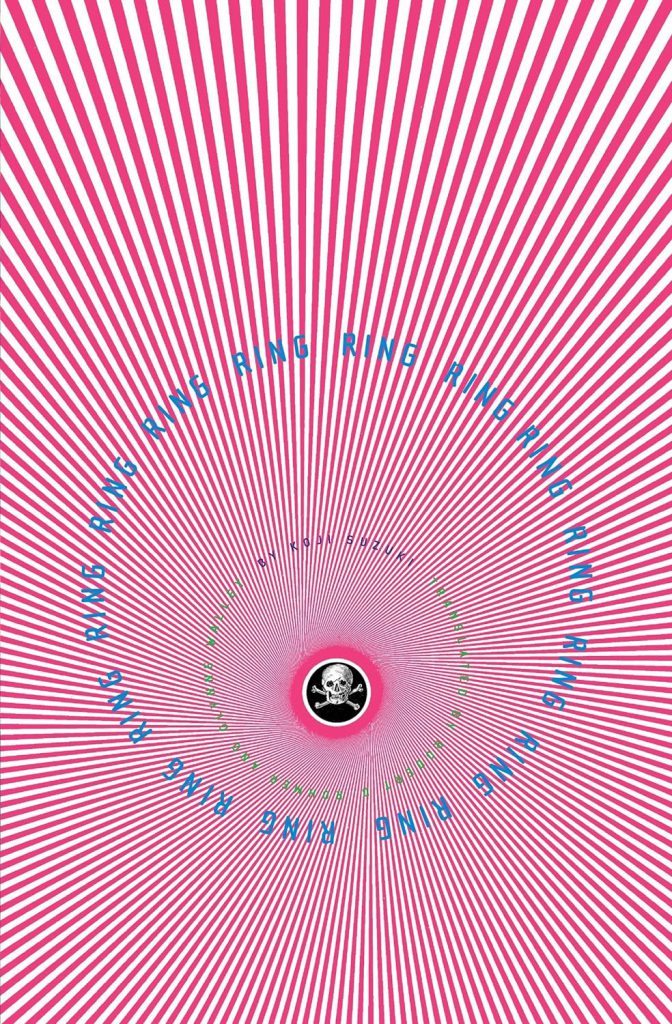
Marcy: The novel that created a modern horror icon, Suzuki’s Ring is the birthplace of Sadako, the girl who curses you and crawls out of your TV before killing you from fear. But Ring isn’t exactly about that, in truth, and is actually the first novel in a series of novels that become increasingly weird and ridiculous, to the point that I could tell you a spoiler and a totally made-up statement, and you would probably not be able to guess which is which. That said, Ring itself holds up as an amazingly creepy and chilling story about virality in a way that remains worth checking out. Ring suffers a little bit from some indelicate handling of intersex people, a thing that isn’t as much ‘dating’ the novel as it is just poor representation for shock value, but there is quite a lot in this novel worth checking out if you’re curious to give J-Horror a try.
Perhaps one of the most interesting aspects of Ring is that it very much predates ‘viral’ media, in a way that is almost as prescient as it is ironic; the novel’s focus on VHS tapes and analog media at the cusp of the digital age is unique, something that the later novels, taking place in a post digital and post ‘infinite’ internet, are unable to truly ever recover from. Sadako, also, is slightly different from how she appears in the film versions of Ring (either the English version, The Ring, or the original Japanese Ringu), both of which take some liberties with the story and remove some of the more oddball parts to the story.
Ship of Fools/Unto Leviathan – Richard Russo
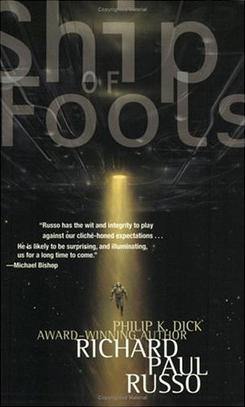
Lenoon: Out in the black of space, the generation ship Argonos drifts without a destination, stagnating into religiously stratified collapse until, like a message from God, they hear a signal. Finding a long-abandoned colony, the crew find little trace of humanity except a chilling reminder that we aren’t alone out there… not alone at all.
Space is full of horrors, and the unknown and unknowable motivations of aliens that far outstrip the capacity of humans to react to them is a classic SF horror trope. It’s done better than most here, with a sense of building dread that peaks a couple of times into yawning horror. Unlike Alien, which I think has some real similarities in terms of what-the-fuck-is-happening-here, Russo doesn’t give answers as to why aliens commit horrors, they just do, and have, and will. We are cast out into the night and have no comprehension of what may be lurking for us there. What is waiting. What will harvest us for unknowable ends.
There are sections of this book that really creep me out. The whole social organization of the Argonos is 40k levels of theocratic horror, but the recurrent scenes of cracking open mass vaults full of human bodies are chilling and have stayed with me for a long time. There’re certainly problems with it as a book both structurally (the end just kind of becomes “here’s some stuff that happened”) and thematically (evil within the divine universe ends up tiresome and pretty preachy), but overall, it’s a good, horrible, read. There was a great comment I saw on it once – this is what Prometheus should have been.
House of Leaves – Mark Z. Danielewski
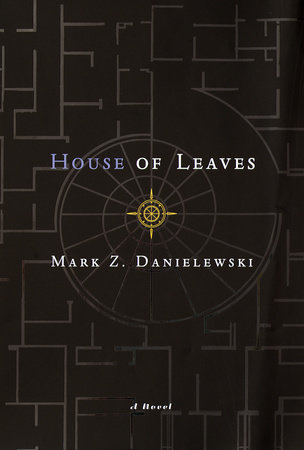
Liam: If you had asked me in early 2013 what I thought of House of Leaves, I would have told you it was utterly amazing, inventive and clever and just oh so deep and complex. Unfortunately, this article is being written in 2023, after I have had the benefit of a re-read, and so my opinion of it is no longer quite the same.
For those rare few of you who are somehow reading this column on Goonhammer in the third decade of the third millennium and yet aren’t aware of this book, let me summarise briefly. House of Leaves is a thick tome of a book, delivered in a combination of formats. In part, it’s an epistolary novel from the point of view of Johnny Truant, an apprentice tattoo artist with a damaged upbringing. Through his notes and letters he tells us about Zampanò, a blind, and now dead, author writing a book called The Navidson Record, about a documentary film about a mysterious house – a film which does not, in fact, appear to exist. The Navidson Record makes up most of the rest of the book, purportedly being Zampanò’s work which Truant decides to edit and complete for publication. In contrast to the Johnny Truant section, this is presented in the form of an academic piece, complete with numerous citations most of which are apparently not real in-universe. Johnny, as self-appointed editor, adds his own footnotes to the record, pointing some of this stuff out or commenting on various aspects.
As the book goes on, format screw piles upon format screw – text runs off the page or loops around it or turns sideways on, pages are stylized like handwritten notes or scribbled drawings or whatever else, as Johnny begins to unravel. As he becomes more obsessed with the Record, the rest of his life goes to pieces, and he becomes ever more convinced that the house is real – even as his own work seems to identify it as being clearly fictional.
It’s really this aspect which won the book so much praise. Here’s the thing, though – beyond the novelty of it all, the book is deeply, deeply boring. So much of it is horror done badly, giving the illusion of depth by way of setting up the suggestion of deeper possibilities without ever doing anything with them. The house simply is, but unsatisfyingly, as though the author couldn’t really think of much to do with it except have it be spooky. A rote series of events occurs in and around it largely so that the framing devices can exist. Much worse are the Johnny Truant sections; they go on and on, and Johnny is an utterly unengaging character. Even as his life falls apart, he can’t seem to stop getting laid. I don’t know about you, but reading hundreds of pages about a boring guy having sex described with the puerile vocabulary of a PornHub comments section isn’t really my bag.
The ultimate conclusion is that the book tries so hard to be inventive and clever that it forgets to actually include any characters or writing. Lenoon and I have discussed it before, since it comes up regularly in nerd circles, and I think the best summary we’ve come up with is that it’s a non-linear novel targeted at the licensed fiction set – if all you’ve ever read are Star Wars tie-ins or, topically, Black Library bolter porn, then House of Leaves will look incredible by comparison. If you’re familiar with books written for adults, however, then it becomes rather badly exposed as a writing exercise taken much too far, with experiments and devices overwhelming the thin core text.
Higurashi no Naku Koro Ni / Higurashi: When They Cry by Ryukishi07

Marcy: Now, bear with me here for a moment. This might seem like quite the departure from our usual recommendations, in a few ways, but the When They Cry series remains one of my all-time favorite horror stories and experiments with narrative storytelling. Higurashi and its sister series Umineko sometimes fight for which is better, but I prefer the psychological elements of Higurashi. Higurashi is not a “game,” despite it being listed on places such as Steam, but is instead a “Sound Novel,” a slight departure from the usual visual novel styles that combine drawn backgrounds over text. There is voice acting, and also just a lot of reading, but the reality is that Higurashi spans a whopping 8 titles, divided into ‘question’ and ‘answers’. There’s a lot of meta-textual horror, as the bookended titles don’t exactly mean you’ve found out the truth.
Higurashi created a media empire off of the sensation it breathed into the genre, with numerous anime, manga, light novels, and more. There are even more ‘game’ like versions where you are able to make choices, but the mainline Sound Novels don’t focus on that. You read and experience the story, each time giving you more of the picture of what might actually be happening in the town of Hinamizawa. The art style takes a bit of getting used to initially–Ryukishi07 did the art himself for the initial releases, and the MangaGamer releases on steam include original and updated art.
Higurashi’s strength comes from the unfolding mysteries and trying to piece together a mystery with the pieces you’ve given, especially when they come out of order. The “answer” segments also don’t particularly answer things in the way you might expect, providing occasionally answers that make previous segment questions different or even makes going through them again and re-reading them different in terms of what you get out of the experience.
The horror here is mostly psychological, and there are particularly amazing ways in which Higurashi makes you doubt what you think you know, and watching the characters–mostly teenagers–try to solve the horrific things happening in their town, and the histories behind all of these things–makes that psychological tension even worse. Perhaps in the sense that these are not games, the reader is left to just read, and watch, and listen, to the things that are happening, without any hope of actually changing the outcomes in front of them. The Higurashi series is absolutely worth it if you’re looking to get a little experimental with your reading, and the first episode is free, if you’re worried about commitment.
The Birth Machine – Elizabeth Baines
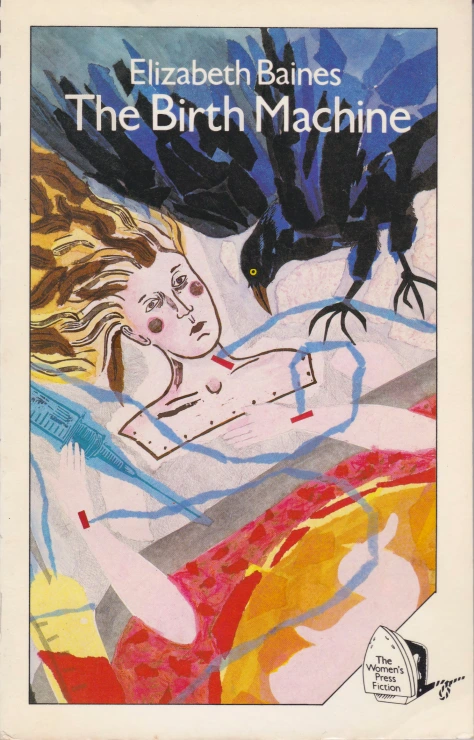
Lenoon: In the near future, childbirth is considered too primitive. Too messy. Too unpredictable. Too female. It’s time the men of science resolved that, with the Birth Machine. Finally, they can put birth where it belongs – in the hands of sensible men, who understand these things.
A short, sharp novella from an unjustly overlooked writer that straddles the boundaries of fiction, horror and Sci-Fi. The Birth Machine is profoundly unsettling, the kind of horror that comes from observing the world around us and linking up the little breadcrumbs and dog whistles of a profoundly fucked up culture. As Zelda, the protagonist, nears her due date, control is subtly and then rapidly taken away from her, language and terminology begin to imprison her and drip by drip the process turns into psychological and body horror. It’s a book written at, and for, men – something that surprised me as I’d read the Women’s Press imprint first, though finding Elizabeth Baines’ story on her blog cleared up why. I think as a horror novel it’s scary in the way psychological thrillers are, and as a Sci-Fi novel as prescient about how certain fucked up misogynists and sexual predators have rebranded themselves as “pro-women” through weaponizing transphobia as it is about the impact of technology on people’s lives.
It’s a well-crafted, concise and powerful story and one that rewards a reread – and one that is far too little known.
Black Library Horror Pick: Drachenfels
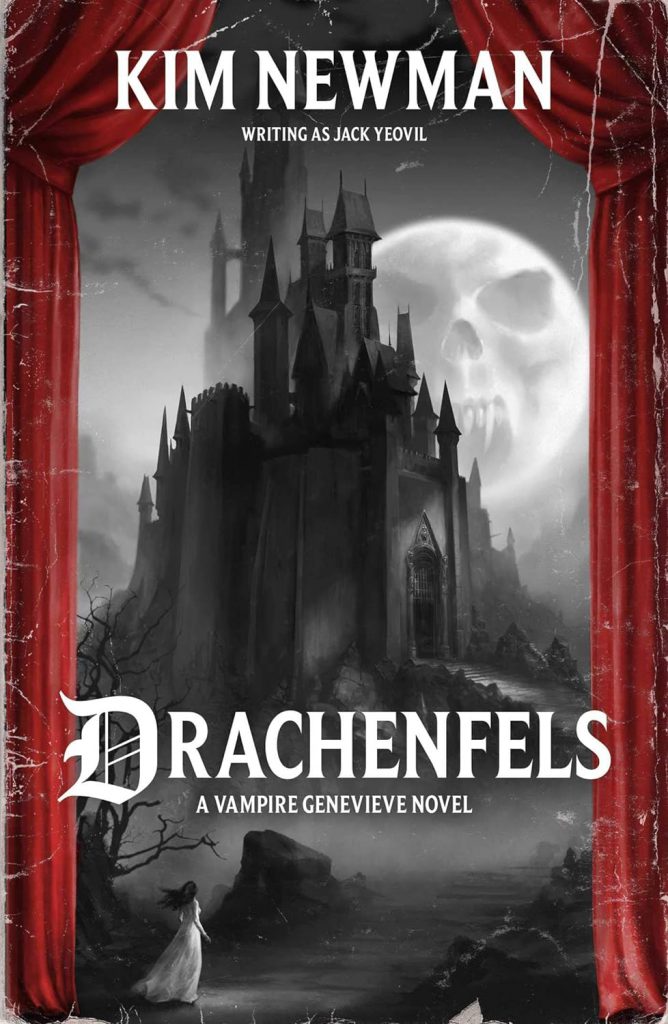
Listen, was there really any doubt that Drachenfels would be the pick here? While there are certainly other Warhammer Horror novels out there, not many of them have the legacy or impact that Drachenfels did; when Black Library relaunched Warhammer Horror, there’s a good reason they started with this one as a flagship title.
While it is undoubtedly a book that is aging not particularly well, Drachenfels remains perhaps one of the best stand-alone ‘horror’ stories in the Black Library. It exists without requiring much, if any, knowledge of Warhammer or Warhammer Fantasy in particular, and hits familiar gothic horror tropes in ways that many modern Warhammer Horror books actually seem to be unable to replicate. There are some unfortunate concepts in this book–Genevieve is as much a cool female lead as she is a really cringe-inducing overly sexualized cartoon of a person sometimes–but if you’ve never had a chance to read Drachenfels or the following stories involving Genevieve, they’ve all been recently republished and put into ebook form, meaning that you’re able to do so now if you dare.
Questions, comments, suggestions? Terrifying reads you just have to add? Aghast that Lenoon is doing his Heinlein bit in Marcy’s article? Contact@goonhammer.com or leave a comment below.
